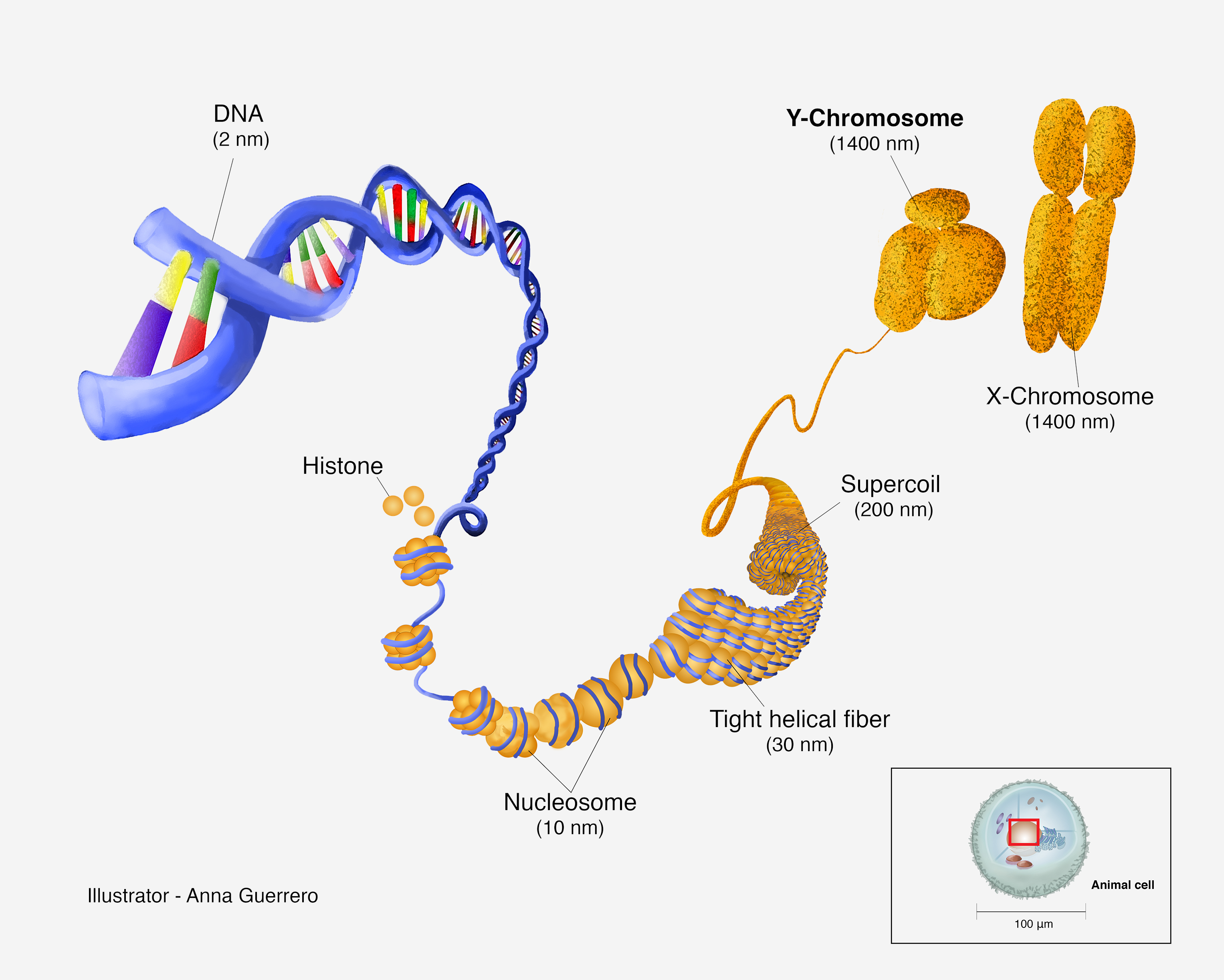DNA and X and Y Chromosomes

Y-chromosomes exist in the body cells of many kinds of male animals. Found in the nucleus of most living animal cells, the X and Y-chromosomes are condensed structures made of DNA wrapped around proteins called histones. The individual histones bunch into groups that the coiled DNA wraps around called a nucleosome, which are roughly 10 nano-meters (nm) across. The histones bunch together to form a helical fiber (30 nm) that spins into a supercoil (200 nm). During much of a cell's life, DNA exists in the 200 nm supercoil phase. But when DNA replicates itself, supercoils condense further into visible chromosomes with diameters of about 1400 nm. The X- and Y-chromosomes carry the genetic information that determines the sex of many types of animals. The Y-chromosome contains a gene called the sex-determining region Y, or the SRY gene in humans. If a fertilized egg, called a zygote, has the SRY gene, the zygote develops normally into an adult organism with male sex traits. Zygotes without the SRY gene develop to have female traits. Zygotes with Y-chromosomes but mutated SRY genes can develop into adult organisms that have female traits.
Keywords
How to cite
Publisher
Handle
Rights
Articles Rights and Graphics
Copyright Arizona Board of Regents Licensed as Creative Commons Attribution-NonCommercial-Share Alike 3.0 Unported (CC BY-NC-SA 3.0)

